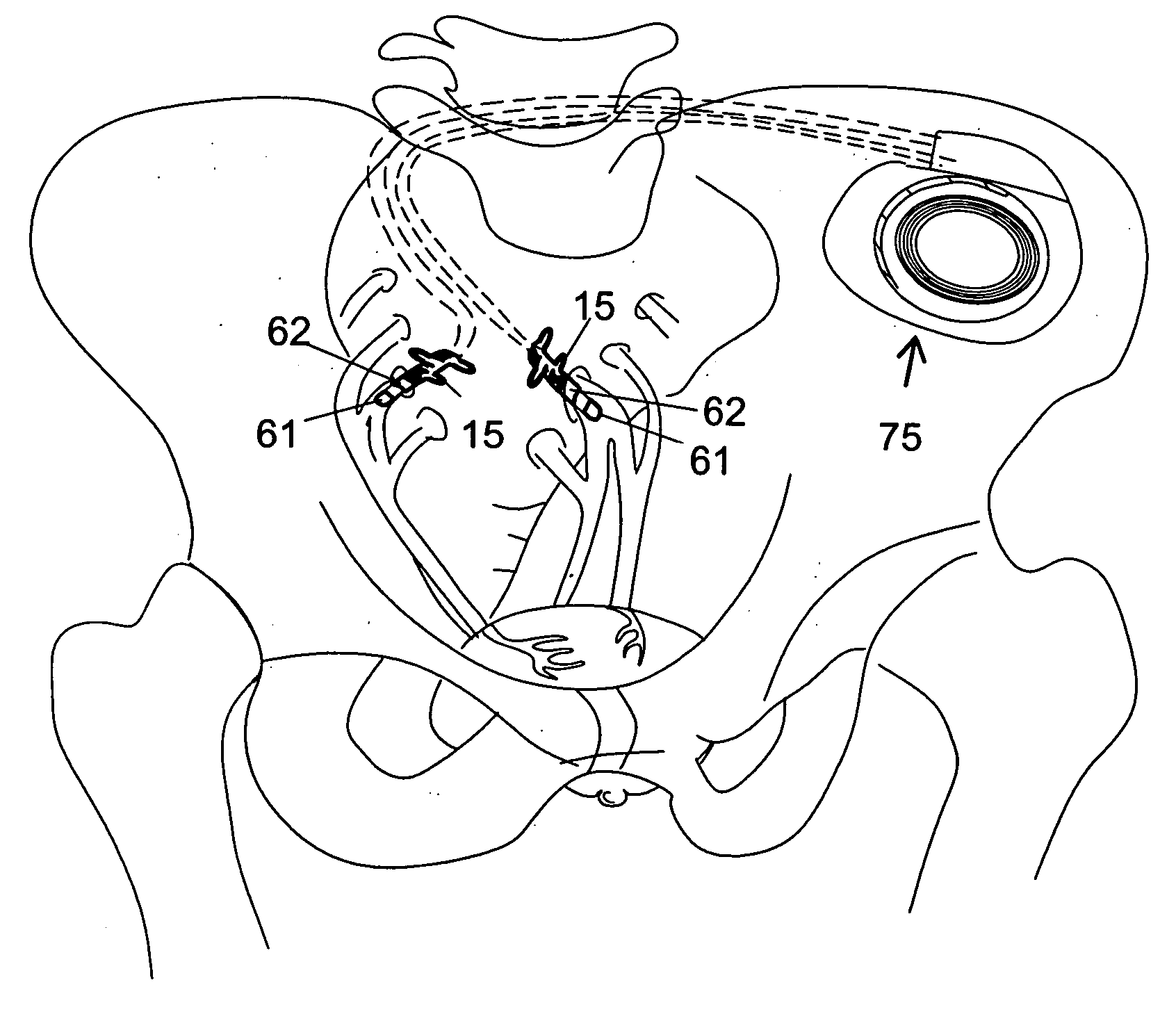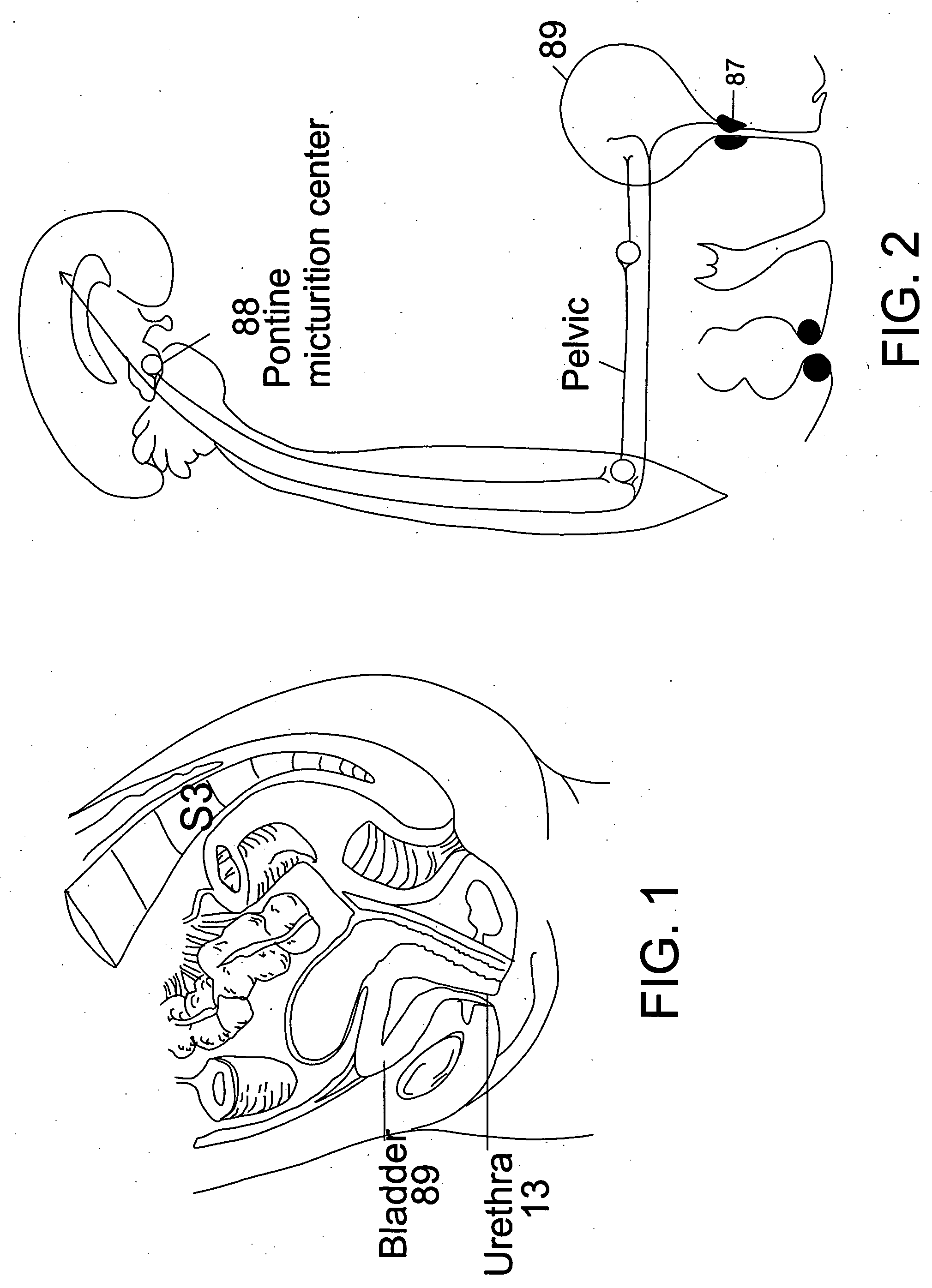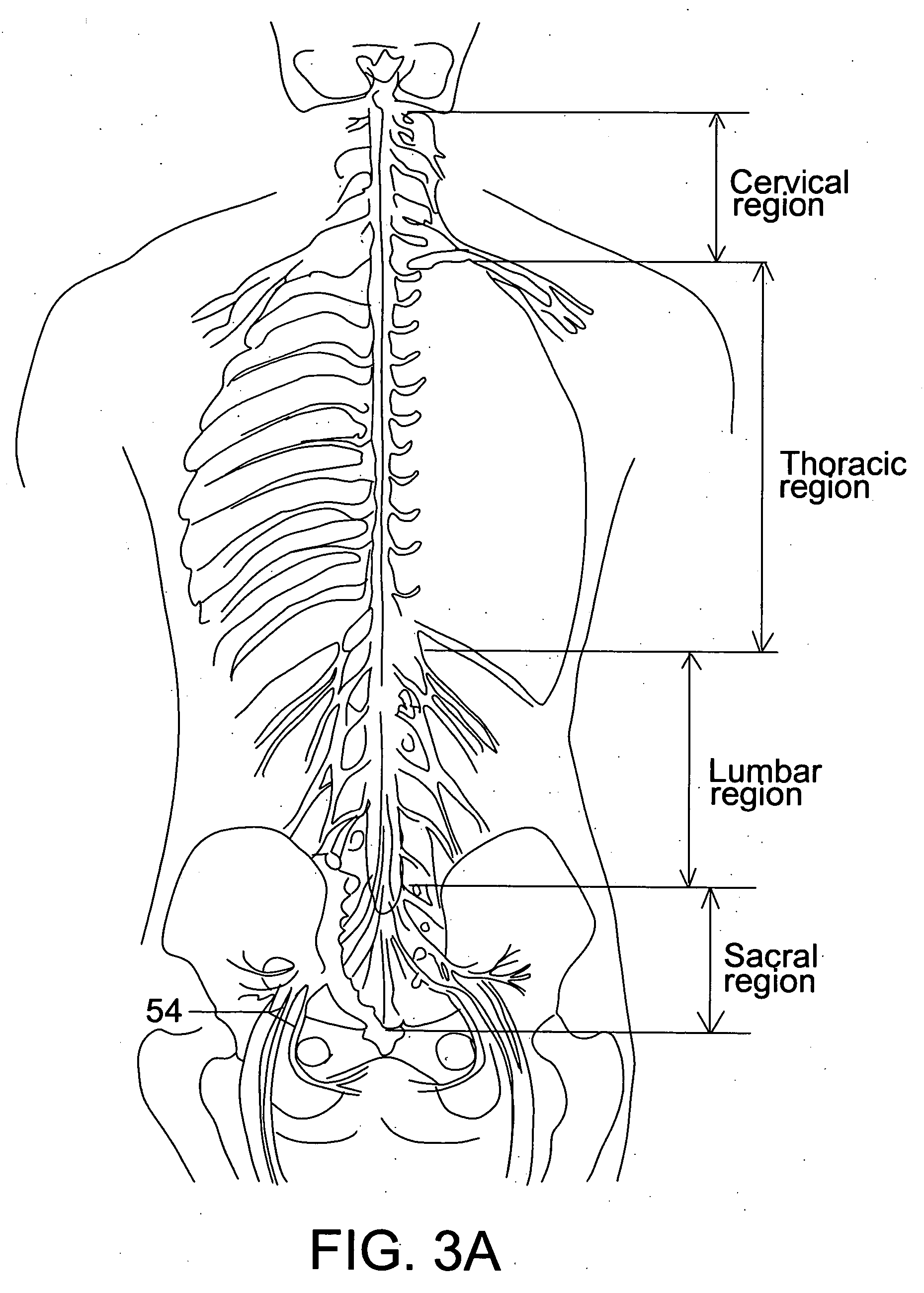Method and system for modulating sacral nerves and/or its branches in a patient to provide therapy for urological disorders and/or fecal incontinence, using rectangular and/or complex electrical pulses
a sacral nerve and nerve branch technology, applied in the field of electrical neuromodulation therapy for medical disorders, can solve the problems of repeated generator replacement surgery, premature depletion of battery, and inability to maintain the battery life,
- Summary
- Abstract
- Description
- Claims
- Application Information
AI Technical Summary
Benefits of technology
Problems solved by technology
Method used
Image
Examples
Embodiment Construction
[0168] The method and system of the current invention delivers pulsed electrical stimulation, to provide therapy for urinary incontinence, urological disorders and / or fecal incontinence. The urological disorders include overflow incontinence, stress incontinence, idiopathic chronic urinary retention, interstitial cystitis, neuro-urological disorder, vesico-urethral dysfunctions, bladder inflammation, bladder pain, pelvic pain, and genito-urinary disorders such as prostatitis, prostatalgia, and prostatodynia. The electrical stimulation is delivered usually to S3 (shown in FIGS. 10A and 37), but may be to S4 or other sacral nerves or branches such as the pudendal nerves or perineal nerves. The electrode placement and stimulation may be unilateral (FIG. 10A) or bilateral (FIG. 10B). The method and system comprises both implantable and external components.
[0169] For implantation of the system, an incision is made and the distal portion of the lead is implanted in the tissue with electr...
PUM
 Login to View More
Login to View More Abstract
Description
Claims
Application Information
 Login to View More
Login to View More - R&D
- Intellectual Property
- Life Sciences
- Materials
- Tech Scout
- Unparalleled Data Quality
- Higher Quality Content
- 60% Fewer Hallucinations
Browse by: Latest US Patents, China's latest patents, Technical Efficacy Thesaurus, Application Domain, Technology Topic, Popular Technical Reports.
© 2025 PatSnap. All rights reserved.Legal|Privacy policy|Modern Slavery Act Transparency Statement|Sitemap|About US| Contact US: help@patsnap.com



